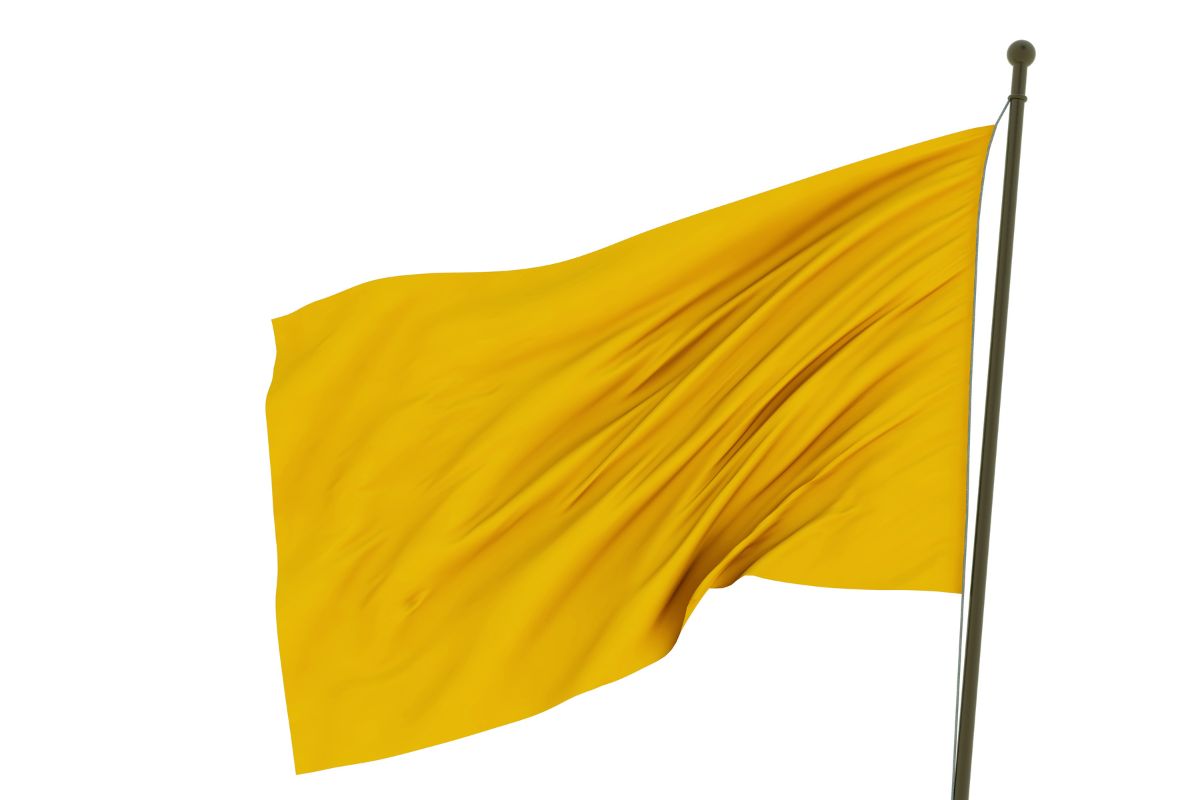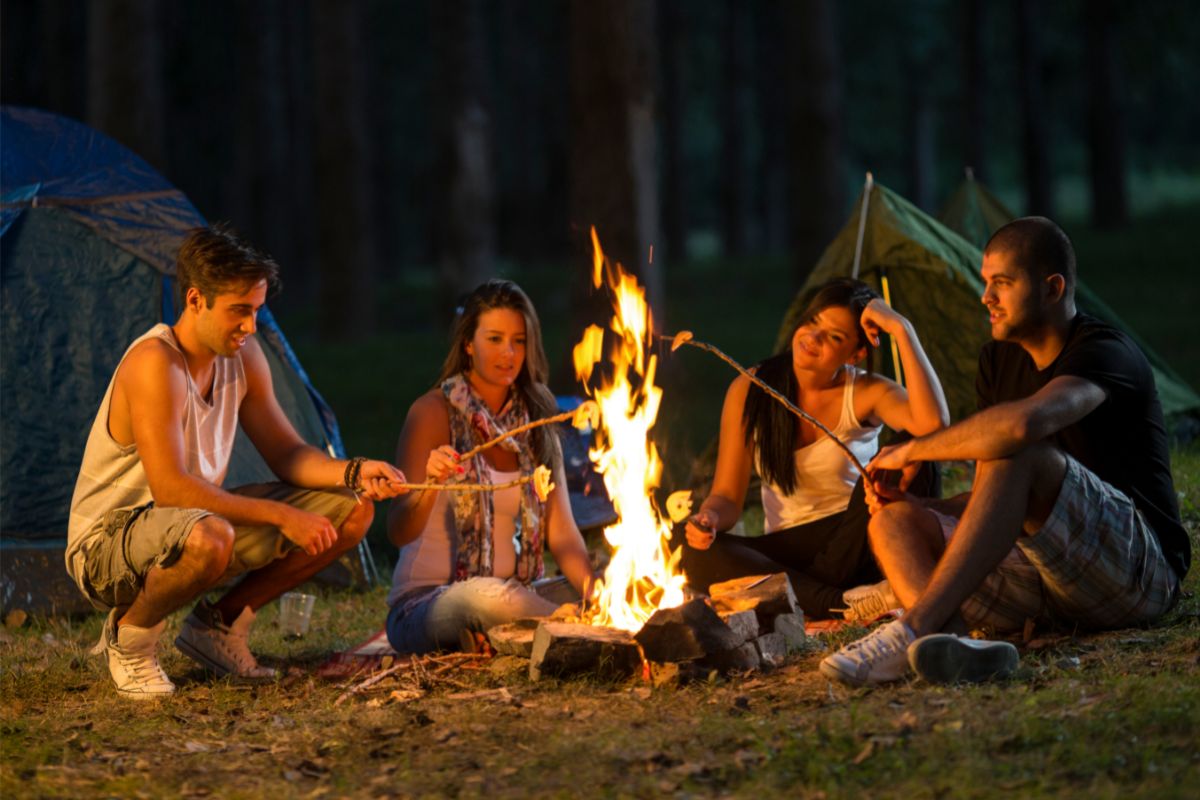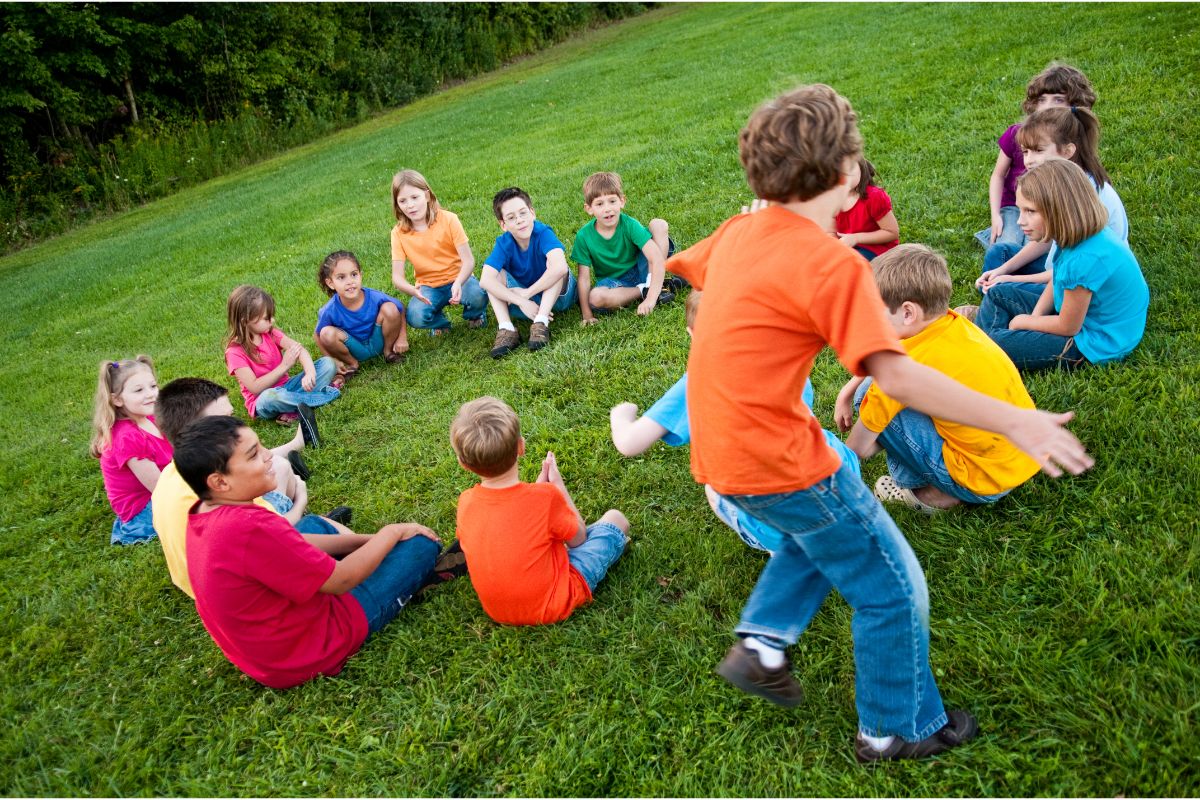Do you remember when you were a kid and went camping with your family or friends?

Whether it’s sitting around a campfire, going for hikes in the woods, or playing various games on the beach, camping is great fun. It’s even more enjoyable when you have some great games planned.
To help make sure that your trip is filled with excitement and laughter, here are 25 fun camping games to try out while camping with your friends and/or family; they’re guaranteed to bring hours of entertainment.
1. Hoody-Hoo
Hoody hoo camp game is a classic game for kids and adults alike. The goal of the game is to have one team or individual try to catch the other while they try to avoid being caught.
To play, participants form two teams, with one objecting group being called the “hoodles” and the other opposing team being called the “hoovers”.
The hoovers will then chase after the hoodles in an attempt to tag them, and once a hoodle has been tagged they become part of the hoover team.
This continues until all members of the hoodles team have been “converted” over to join the opposing hoovers team.
The most unique feature of this game is that it takes place outdoors, with players running around through various natural obstacles such as trees, rocks, bushes and more in order to make it harder for their opposition to tag them.
Other rules for this game may include not leaving a certain playing area, honing one’s sneakiness skills by hiding or taking unconventional paths made through nature’s terrain.
2. Catch-The-Bacon
Catch the Bacon is a classic camp game that never fails to entertain. It’s great indoors and out, with a wide age range of players.
The goal of the game is for one team to catch the opposing team’s “bacon” – typically a hula hoop or specifically marked Frisbee- by successfully throwing a tennis ball through it on their turn.
The players are divided into two teams, each with their own assigned area. The game begins with both teams sitting in their areas and the ball in the middle.
Each side takes turns throwing the ball at the other team’s designated area in an attempt to make it through their bacon hoop, while members of that team can dodge and defend against getting hit by stretching out their legs as far as they can – mimicking a real pig catching game! If successful, that team gets one point.
3. Ant Hill
Ant Hill camp is an exciting outdoor adventure game for kids of all ages. The goal is to build an ant-hill by collecting resources from around the campground and constructing it in the fastest possible time.
The game starts with all players scrambling out of the starting line and running to collect sticks, stones, and other found objects that can be used to construct a hill of varying heights.
In order to make sure the structure remains sturdy, players have to work together and organise their efforts strategically.
Then they have to strategize when it comes time to collect resources from further away, using string or elastic bands as “ant trails” between two distant points (stones are securely fastened at each end).
As they continue this process one stick at a time, eventually a tall hill is created. After several minutes of hard work, cheers will fill the air when the tallest hill of the bunch appears!
This is an incredibly fun and memorable game for any group gathering – outdoors or indoors and makes for great team building exercise too!
4. Ghost In The Graveyard
To begin a ghost in the graveyard one person on each team is chosen as a ghost and must stay standing motionless in the middle of the playground or yard while they count to 100 or counting down from 10.
While they are counting, the rest of their team scatter quickly trying to find a place to hide where they can’t be seen- playing this at night or with flashlights adds an extra element of excitement!
As soon as the timer stops and depending on how big your playing area is, ghosts must cautiously try to creep around without making any noise looking for hidden members of their rival team- but stay quiet keeping their eyes wide open!
If you get spotted then you have to slowly back away from your hiding spot and return to where you began while everyone tries not to laugh too loud.
Ghost In The Graveyard provides hours of entertainment that never seems to get old – although it might feel scary sometimes – because no matter how many times you play it will always feel like a new game each time!
5. 21 Or Bust
A challenging version of blackjack which works best when played among 4-6 people at once!
All players are dealt five cards each where they have to reach 21 points before anyone else does by selecting one card each turn as no extra draws are allowed once all cards are dealt!
The winner gets 1 point after each round while any player hitting above 21 loses 1 point accordingly!
6. Dare Dare
Dare Dare is a game that consists of two teams: The Storytellers and the Daredevils.
The aim of the game is for both teams to tell stories in which one team attempts to complete a challenge without getting hurt or injured.
The Storyteller team works together to come up with creative stories and challenges for their opponents. They must invent characters, settings, plots, and tasks for the other team to accomplish.
Meanwhile, the Daredevils need to use their athletic abilities in order to perform these tasks successfully.
When playing Dare Dare at camp, set up two equal teams with similar numbers on each side. Each team should select a leader who will be responsible for coming up with story ideas and issuing challenges.
Pick an area where everyone can stand comfortably like a soccer field or a wide open space and divide it into two halves—this will be your play area.
Allocate various objects such as rocks or logs as markers between these two halves—these are your ‘guardians’—used by the Storytellers when setting challenges for their opponents.
At this point, all players should stand in their respective half, on either side of the line denoting an imaginary boundary (which acts as “guardian”).
Once in position, challenges may involve running around obstacles or picking something up, carrying some kind of object over certain distances pre-defined by Storytellers before beginning the game or balancing on slippery surfaces while navigating through tight areas etc.
Whoever completes their challenge faster wins that round and earns points for his/her team according to difficulty level & seriousness shown while completing his/her challenge (If he/she performed badly due to any distraction then he loses marks) among all participants.
With each round completed, both teams must alternate between telling stories & performing tasks until all challengers have taken their turn.
The winning team will earn points depending on how quickly and precisely individual challengers complete their respective tasks; these points are then tallied up at the end alongside those from other rounds.
7. Coin Toss
The Coin Toss camp game is a great way for kids to have fun, practise their hand-eye coordination and make decisions.
This classic game can be played with two children or a large group of kids up to 10 or more. All you need for the game is one coin (preferably a quarter) and two players.
To start, the two players select an object that both feel comfortable placing their hands around e.g., a kleenex box.
Then, each player takes turns tossing the coin on the ground between them in an effort to get it nearest to their object without touching it.
The player who gets closest to their object wins the round and gets to claim ownership of it as well as score a point. The game continues until one person has three points and wins the match!
8. Capture The Flag

Capture the Flag (CTF) Camp game is an outdoor game for two teams of any size.
The goal of the game is for one team to capture a flag from the opposing team and bring it back to their designated starting point.
The teams strategically plan how to defend their flag while trying to capture the other team’s flag without being detected.
Each team will hide their flags in different parts of a field, such as on tree branches, behind rocks, or buried in the ground.
To win the game, each team has to find and capture each other’s flag as quickly as possible without getting caught by the other team’s members.
Additionally, each team can create and use various tactics, such as decoy flags or distractions in order to gain an advantage over the opposition.
To ensure fairness within game play, members of both teams should stay within a certain distance from each other while playing CTF.
9. Flashlight Tag
Flashlight tag camp game is a popular outdoor game among children of all ages. It’s an interactive way to provide entertainment, exercise and camaraderie during the camping trip.
The basic rules are simple: one person is named “it” and they have their own flashlight while the other players have none.
The person that was chosen to be “it” will then try to tag the other players with their beam from a distance, when this happens, the player must stay put until either another player shines theirs up on them or it moves onto someone else.
This same process continues around in circles until there is only one person who wasn’t caught by “it”.
To make things more interesting, some camps add variations to increase the difficulty such as making each player have individual points and whoever gets tagged loses a point but if they manage to tag another player then both people get back a point.
Additionally, you can use props like coloured pieces of paper that are placed throughout the playing area; if caught by “it” while trying to collect them, then points can be lost depending on which colour you were trying to get.
10. Campfire Charades
Campfire charades is a fun game that can be enjoyed by both kids and adults alike at any camping trip.
This game involves a group of people coming up with scenarios for one or more players to act out in order to provide amusement and laughter all around.
To begin, every player thinks of a funny scenario involving animals, nature, objects or activities common to camping adventures.
One player then acts it out while the other players try to figure out what the scenario is. A correct answer earns one point per guesser.
To make the game even more engaging, the actor should try to use exaggerated expressions and movements when acting out their role – this usually results in loads of laughter once everyone guesses right!
Campfire charades can also be spiced up by giving different themes like “animals” or “camping activities” as well as time limits so anyone who fails to complete their challenge within the time limit has to take a penalty.
11. Marshmallow Toss
Marshmallow toss is an incredibly fun and engaging camp game. It’s the perfect game to get everyone involved and having a good time.
All you need to play is two people, marshmallows, and a soft surface such as a lawn or camping field.
One player stands at one end of the playing field with their feet placed shoulder-width apart and throws the marshmallow overhand to the other person who stands at the opposite end of the playing field.
This can be done individually or in teams such as relay races for example. The first team to catch all of their marshmallows wins!
The game can be made more challenging with different ways to throw and catch, for example, underhanded catching or throwing with one hand only behind their back. The possibilities are endless!
12. Camping Scavenger Hunt
Divide players into teams and give them a list of items they must find around the campsite such as leaves, rocks, sticks, etc. The team that finds the most items wins!
After all teams are finished hunting down their list of items, total up each quester’s score by adding up all of their individually collected points.
These results can then determine which team was victorious – offer prizes to both first-place winners as well as runners-up if desired!
Depending on how many people took part, offer rewards like candy bars or gift cards; glow sticks are also a great way \to keep campers motivated throughout their night-time searches!
13. Camping Trivia
Test your camping knowledge with this fun game! Players must answer questions about camping, nature, and outdoor activities. The player with the most correct answers wins!
To set up your campsite trivia camping game, all you have to do is decide who will go first and agree on what reward each correct answer will be rewarded with – like extra s’mores or a prize!
Next, create some questions that are related to local plant or animal life, geography, outdoor skills or anything else related to nature.
Once you have the questions ready, you can start playing!
14. Blindfolded Obstacle Course
Set up an obstacle course in the campsite and have players navigate it while blindfolded. The first person to complete the course wins!
Design tasks that open up opportunities for campers to be creative when overcoming each obstacle —think of tasks where campers have to figure out how to move from one point to another without running into obstacles.
Consider tasks like hopscotch, dancing your way through areas with obstacles, or balancing from one side of the course to another.
Once teams are divided and ready, it’s time to put on blindfolds! Give every participant a blindfold and ensure that everyone is wearing one securely before beginning each round.
Instructing team members on verbal commands will help enhance teamwork skills since players must rely solely on auditory instruction rather than vision in order complete each task successfully without leading someone off track with nonverbal cues (like pointing).
Lots of laughter guaranteed with this game!
15. Camping Bingo
The rules of camping bingo are simple and flexible. As the game organiser, you’ll create the list of items each person will be looking for while they’re out exploring the campsite.
You can make it as easy or as difficult as you like; this allows everyone in the group, regardless of age, to have a chance at completing their card first.
Once everyone has their list of items, it’s time for the adventure to begin! Every person will take turns searching for the items on their bingo cards. As soon as someone finds all five items in a row, they yell “bingo” and win the game!
16. Campfire Cooking

Players must use the campfire to cook a meal using only items found around the campsite. The team with the best-tasting meal wins!
Before starting any game involving campfire cooking, choosing a theme for your menu will add an extra layer of competition and make the task much more interesting.
You can either decide on something as specific as “snack-based meals” or have broad categories such as “vegetarian” or “desserts-only”.
No matter what type of cuisine or meal type you opt for, make sure that everyone has access to all the necessary ingredients to be able to create their dish in the time limit set by one of the participants.
Adding time limits to any game increases its level of difficulty and fun too!
Also, it brings out a greater sense of creativity since participants need to find innovative ways to prepare their dish within set periods.
When it comes to presenting your dishes at camping sites, presentation is key! We suggest creative presentations such as plating with leaves or edible flowers.
Other than adding aesthetic appeal, garnishing compliments the overall preparation method used while creating dishes and adds another layer of complexity – which is quite welcome while playing campfire cooking games!
There’s no better way to implement culinary awards than using fancy name tags such as “best presentation award” or “most flavourful entree award” etc.
Accolades like these are important even when there is no winner because each player can receive personal recognition for their efforts in creating tasty meals from scratch at campsites without conventional cooking equipment or household utensils!
17. Glow Stick Tag
This game is similar to flashlight tag, but with glow sticks instead! Players must try to tag each other while avoiding being tagged themselves. The last person standing wins!
The great thing about this game is that it can be modified to fit any age group. Here’s how you can play glow stick tag:
Create teams of two or more players and make sure each team has one length of glowsticks. The number of glowsticks doesn’t matter, but the longer the glowstick the more chance of winning.
Pick an area for the game such as a large field or campsite that is dark enough for the glow sticks to be visible from some distance away.
It also helps if this area has some obstacles like trees, rocks, etc. so players can easily hide behind them during the game!
Once all the rules are established then turn off all lights in order to see those glowing sticks!
Let everyone know they can get creative with their movements while playing – jumping around rocks, up trees, etc.- as long as they keep moving strategically they should be fine!
When time runs out, count up who has what amount of points from tagging people and declare a winner!
18. Camping Storytelling
Campfire stories have been around for centuries, but with the rise of camping, storytelling games have become a popular way to tell campfire tales.
Choose a player to start. They will tell the first sentence of their story. The main idea can be anything but it should introduce what’s going on in your tale.
An example would be “Once upon a time there was a hunter in the woods…”.
Next, allow each player (or team) to continue the story by adding an extra sentence at a time in turns, until everyone has had their turn and added some part of the story onto it.
Each new sentence should add more depth and detail about what is happening in your tale and develop characters or ideas introduced in earlier sentences rather than altering or contradicting them.
Once everyone has finished their contributions, the storyteller will finish off the tale with them tying up any loose ends and completing their storyline as they wish for all to hear!
Afterward everyone can chat about what happened during their journey, discuss why certain choices were made and allow further imagination from all players!
Finally remember that this is just one example of campfire stories – there really is no wrong way when it comes to storytelling around the campfire so feel free to change rules or make up your own game as you please!
19. Camping Olympics
Camping Olympics is a fun and competitive game consisting of multiple rounds. The rounds involve completing a series of physical challenges, like sack races, arm wrestling, water balloon tosses and more.
To win, the team must complete each challenge faster or better than their opponents.
The key to successful Camping Olympics is choosing teams carefully. You should also aim for an even balance of team sizes so that everyone has a chance for victory.
Everyone in your campground should be able to participate in some way in the challenges you select for your Olympic games.
This means including non-physical activities such as trivia questions or musical chairs. This can help ensure everyone is involved and having a great time during the games!
20. Marshmallow Roasting
Roast marshmallows over the campfire and see who can make the most creative s’mores. The most creative s’more wins!
The first step in playing the Marshmallow Roasting Storytelling Camping Game is preparing your supplies. Make sure that each camper has their own bag to store all their items in.
You’ll need a few items for each player such as a tin cup, an unsharpened pencil or stick for roasting marshmallows, and a few processed sugar cubes.
Each person will also need to have one small flashlight with batteries included (It’s helpful to have one light per participant).
Once everyone has been given their materials it’s time to begin! The goal of the game is to both cook and tell stories at the same time while sitting around the campfire.
Everyone should be seated comfortably with their flashlight off around a roaring fire.
When ready someone can start off by lighting their tin cup with either flint and steel or another light source and pouring one of the processed sugar cubes into them.
As they slowly let it melt over the flames each camper must use their imagination and come up with a story on-the-spot about anything that comes to mind – from fantastical tales about animals to an adventure in space!
Every storyteller has two minutes only to come up with an amazing tale before passing it along to someone else who will add onto it until all players have gone around once finishing off where they started.
21. Camping Scattergories
The basic idea behind Camping Scattergories is simple: participants are given a list of categories – such as tools, animals, plants, planets – and must come up with as many words for each category that start with different letters.
For example, if one of the categories is “animals” you might choose “alligator” and “anteater” as two answers beginning with different letters.
Points are awarded for participants who come up with multiple answers that nobody else has thought of.
Once the groups have brainstormed their answers they can move on to the fun part: selecting an actor to act out their word!
The actor will get creative in how they act out their word while everyone else continues to guess what they are trying to portray.
The winner is determined by whoever guesses correctly first or by whoever has accumulated the most points after each round of play.
22. Duck, Duck, Goose

Duck Duck Goose is a classic game that has been delighting children of all ages for generations.
Played in a large, open space outdoors the game involves safely chasing each other around while trying to “catch” someone and become the Duck Duck Goose!
What makes it so much fun? It encourages physical activity with some strategic thought, plus the requisite amount of silliness.
To begin playing, you will need at least two players and an open area where you can move about freely (for example, a grassy clearing or campsite).
For best results, it is recommended that you have between 6-10 players. You also might want to bring along something to mark off a “start” and “finish” line in order to keep track of your progress.
The game starts by designating one person as the “tapper” or “seeker.” The tapper stands in the middle of the playing area and faces away from the rest of the players, who form a circle around them.
The tapper then calls out each player’s name beginning with “duck” followed by another “duck,” before finally calling out someone’s name followed by “Goose!”
At this point, the person whose name was called starts running around the circle in an attempt to get back safely without being tagged by the tapper.
Meanwhile, the other players must stay still until they’ve heard their own names called out twice (two ducks). Once they hear their own names called twice they are allowed to break free and start running as well.
The winner of this round is whoever manages to make it back into the middle first without being caught!
If both sides manage to evade being caught by tag, no one wins and another round begins with a new tapper taking over from centre.
23. Sardines
The goal of the sardines camping game is simple: one person goes off somewhere in the area and hides. The rest of the players have to find him or her before time runs out.
As soon as someone finds them, they join them in hiding until all players have found the hidden individual. The last person who finds everyone else then becomes it for the next round.
Before starting, it’s important that all players are well aware of the boundaries of where games will be allowed to hide – no matter how creative!
This is particularly important with younger children, so that they don’t go too far away from everyone else.
Additionally, it’s important to pick a safe location without any potential hazards or danger spots before deciding on where everyone should hide.
24. Pillowcase Races
Pillowcase racing is an exciting way to physically challenge yourself during a camping vacation.
The game involves running up and down hills or around obstacles while holding onto pillowcases stuffed with clothes (or other materials).
Simply put, you climb uphill while pulling your pillowcase behind you stuffed with whatever you choose: pillows, blankets, or extra clothing.
The idea is to make it across the finish line first with your pack still intact by taking creative routes or by outsmarting your competition.
At its core, pillowcase racing can be enjoyed in two different ways: a straightforward race where players compete to see who can cross the finish line first; or else add a few strategic tasks into each course like tackling hurdles or balancing items across logs as they race through.
To set up the game, all players need is some open space to race on and two pillowcases per competitor.
Players will then begin stuffing their sacks with whatever they choose and heading over to the starting line. Once everyone has indicated that they’re ready, someone will shout “GO!”
At which point everyone starts running towards the finish line as quickly as possible while dragging their pillowcases behind them – trying to avoid obstacles along their way- aiming for that top spot at the podium!
25. Nature Scavenger Hunt
The first step in setting up a nature scavenger hunt is choosing a list of things that you would like to look for.
This could include items such as feathers, pinecones, leaves of different shapes and sizes, acorns, or other items that can be found in nature.
Make sure to adjust your list according to the age group of people playing the game so that it’s age-appropriate and engaging.
When it comes to playing the game there are two different options – teams or solo play. If playing with teams each player should have their own individual list of items they have to find.
If playing solo everyone should use one big list where they can compete against each other as well as themselves.
Setting time limits for Nature Scavenger Hunts is important so everybody knows when the hunt has come to an end.
Depending on how many players you have the time limit can range from 5 minutes up to an hour or longer.
Don’t forget to take into consideration any breaks people need throughout the game either during or after they find something on their list!
Part of making Nature Scavenger Hunts fun while still educational is offering rewards when someone finds something on their list.
Consider small awards such as candy bars or even placing stars next to their name on leaderboards – whatever best fits your group size and budget!
Once everybody has finished searching through nature there should be some sort of celebration where everyone can enjoy snacks and drinks afterwards before heading back out for another round!
Conclusion
Camping is a great way to get away from the hustle and bustle of everyday life and enjoy some quality time with family and friends.
With these 25 fun camping games for kids and adults, you can make sure that everyone has an enjoyable time while learning something new or challenging themselves in a unique way.
Whether it’s pillowcase racing, nature scavenger hunts, or any other game, you’ll be sure to have a great time!
- The 10 Most Dog Friendly Hotels in Glasgow: A Comprehensive Guide for Pet Parents - September 29, 2023
- The 8 Best Dog Friendly Hotels In Liverpool For You And Your Dog - September 25, 2023
- The 8 Best Dog Friendly Hotels In Weymouth For Your Coastal Trip - September 23, 2023










